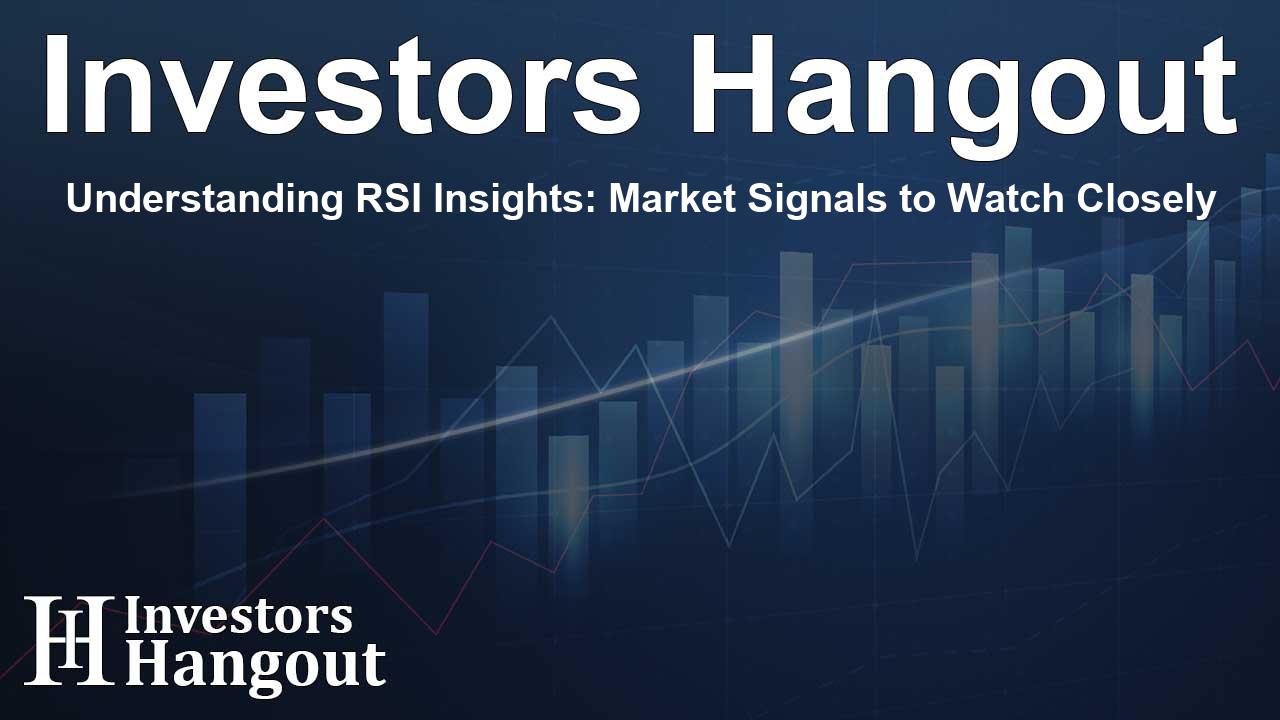Understanding RSI Insights: Market Signals to Watch Closely

Market Momentum: The Current Landscape of the S&P 500
As the S&P 500 reaches remarkable heights beyond 6,300, traders are experiencing a mix of excitement and caution. While celebrations might be in order, the market is displaying signs that could indicate future fluctuations. A notable market metric, the Relative Strength Index (RSI), is beginning to show warnings that investors should heed.
What is the RSI and Why is it Important?
The Relative Strength Index is a momentum oscillator that quantitatively measures price movements, providing insights into whether an asset is overbought or oversold. The RSI operates on a scale from 0 to 100, with values over 70 indicating overbought conditions. Although it does not predict price direction, history has demonstrated that it frequently correlates with significant market shifts.
The Current RSI Reading
Currently, the S&P 500’s 14-day RSI is reported at 75.62. Such levels suggest that the market may be overextended, which can precede sharp downturns.
Past Instances of Overbought Conditions
In analyzing previous instances of high RSI readings in the S&P 500, we find several notable examples where significant market corrections followed:
- July 2024: The RSI exceeded 75, resulting in a swift 10% drop from an index level of 5,660.
- July 2023: The index registered an overbought RSI that led to a 10% slide through late October.
- September 2020: An RSI peak of 83 precipitated a rapid drop of 10% during the same month.
- January 2018: After the RSI soared to 86, the index experienced a staggering 12% fall in just nine trading days in February.
Can RSI Predictions be Trusted?
Despite the historical correlation between high RSI values and price corrections, it’s essential to approach these signals with caution. The RSI is not infallible and should be considered alongside other market factors. For instance, in December 2023, the S&P 500's RSI indicated an overbought situation but continued to surge over 15% until April 2024.
The Role of Market Conditions in Interpreting RSI
While RSI can provide valuable insights, its reliability is influenced by prevailing market conditions. Factors such as economic growth, technological advancements, and investor sentiment can drive the market in unexpected ways. The current buoyant sentiment fueled by AI developments and other robust economic data may support continued price increases even in the face of high RSI indicators.
Advice for Traders and Investors
Given the S&P 500's record highs and the prevailing market landscape, investors should maintain vigilance. While celebrating the recent rally, it’s crucial to monitor technical indicators like the RSI closely. Awareness of the market’s ebb and flow can prove advantageous, especially when navigating potential downturns.
Frequently Asked Questions
What is the Relative Strength Index (RSI)?
The RSI is a momentum oscillator that measures the speed and direction of price movements, helping traders determine potential overbought or oversold conditions in the market.
Why is a high RSI significant?
A high RSI (above 70) often suggests that an asset may be overbought, indicating potential for a market correction or pullback.
What have past RSI readings signaled for the S&P 500?
Historically, high RSI readings have often preceded significant market drops, although this is not a guaranteed outcome.
Are there instances where high RSI signals have failed?
Yes, there are situations where high RSI signals did not lead to immediate corrections, particularly in strong market conditions fueled by external factors.
How can investors use RSI data effectively?
Investors should use RSI data in conjunction with other market conditions and indicators to make informed decisions and manage risk effectively.
About The Author
Contact Lucas Young privately here. Or send an email with ATTN: Lucas Young as the subject to contact@investorshangout.com.
About Investors Hangout
Investors Hangout is a leading online stock forum for financial discussion and learning, offering a wide range of free tools and resources. It draws in traders of all levels, who exchange market knowledge, investigate trading tactics, and keep an eye on industry developments in real time. Featuring financial articles, stock message boards, quotes, charts, company profiles, and live news updates. Through cooperative learning and a wealth of informational resources, it helps users from novices creating their first portfolios to experts honing their techniques. Join Investors Hangout today: https://investorshangout.com/
The content of this article is based on factual, publicly available information and does not represent legal, financial, or investment advice. Investors Hangout does not offer financial advice, and the author is not a licensed financial advisor. Consult a qualified advisor before making any financial or investment decisions based on this article. This article should not be considered advice to purchase, sell, or hold any securities or other investments. If any of the material provided here is inaccurate, please contact us for corrections.
